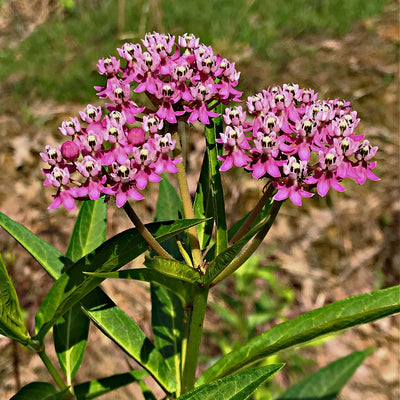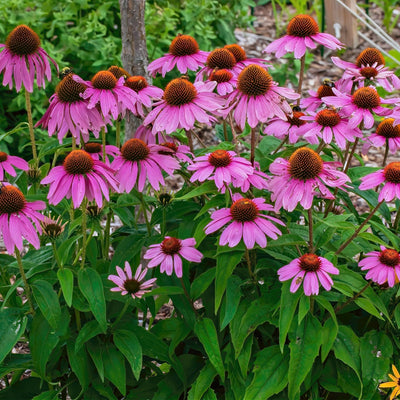Companion Planting Tips
Companion planting is a centuries-old method of planting some plants together so that the whole garden grows healthier, wards off pests, and looks better. By knowing what plants are doing together, you can grow a productive and beautiful garden. Let's learn more about this sustainable gardening habit and show you three plants that we have available from TN Nursery: Black-Eyed Susan, Milkweed, and Purple Coneflower.
What is Companion Planting?
Partner planting is based on biodiversity, the foundation of a healthy garden. Some plant combinations are synchronized to enrich the soil, repel insects, and attract pollinators. For example, some plants naturally spill natural chemicals into the ground to help their neighbors grow, and others serve as natural ant repellents.
This garden practice also feeds helpful insects such as ladybugs and bees, maintaining ecological equilibrium. If you choose your plant combinations wisely, synthetic fertilizers and pesticides will not be required in your garden, which will be greener.
Companion Planting with Black-Eyed Susan, Milkweed, and Purple Coneflower
1. Black-Eyed Susan (Rudbeckia hirta):
Black-Eyed Susan is a beautiful perennial with yellow petals and black centers that will make any garden more vibrant. Apart from its beauty, it is a great companion. Its flowers also draw bees and butterflies to pollinate fruit trees near it. Mix Black-Eyed Susan and Purple Coneflower to make an entire pollinator zone. They create visual unity in their own right and provide continuous blooms throughout the season.
2. Milkweed (Asclepias):
Milkweed is a biodiversity superpower. It is a favorite pollinator plant, and the monarch butterfly lives here. It does great with Black-Eyed Ssusansand Purple Coneflower - a plant paradise filled with organisms. Moreover, Milkweed's milky sap keeps the bugs away and spares the plant's neighbors. Combine it with other flowering shrubs for a garden that is as useful as it is beautiful.
3. Purple Coneflower (Echinacea purpurea):
Purple Coneflower is loved by gardeners for its blooms and medicinal properties. It's an unparalleled pollinator as a companion plant. The sturdy, high stems shade other small plants, such as ground covers or young perennials. Mix Purple Coneflower with Milkweed for visual interest and pollinator benefit. This combination also helps maintain your garden's health for years by adding nutrients and keeping it biodiverse.
How to Create a Companion Planting Chart for Your Garden
A companion planting chart is an easy way to plan your garden. First, decide what plants you want to grow and their needs, such as sunlight, water, and soil type. Then, look for compatible plants that will grow with them or repel insects.
For example, if you want to plant Black-Eyed Susan, Milkweed, and Purple Coneflower from TN Nursery, place them in a sunny area to get the pollinators and the most flowers. Place short-stemmed plants like thyme or oregano near them as natural pest repellents.
Remember to plan for crop rotation. Don't plant the same combinations in the same location year after year, as you will eat up nutrients in the soil. Rotate your plants yearly so the soil doesn't become too dry and diseases don't happen.
Companion planting isn't just better for your garden; it's better for the environment. Add Black-Eyed Susan, Milkweed, and Purple Coneflower from TN Nursery to your companion planting plan, and you'll have a garden that's as pretty as it is functional. And why not start today and see your garden grow in harmony?



